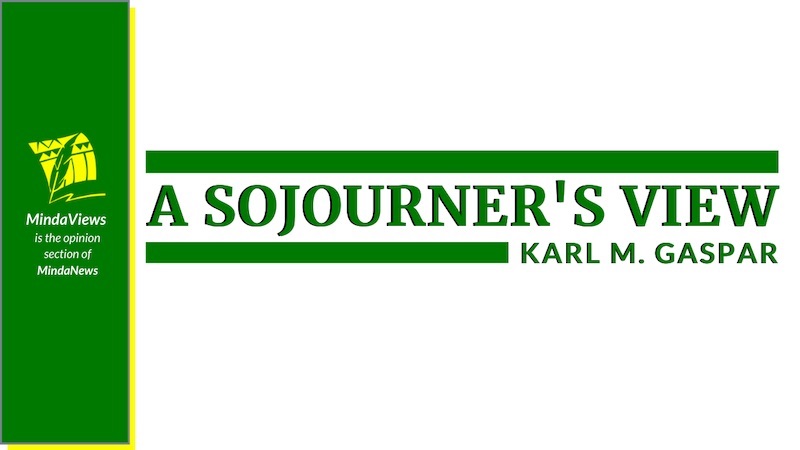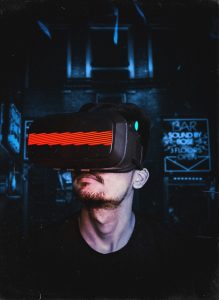How Filipino youth could be the hope of the fatherland in this computer age


CEBU CITY (MindaNews / 21 June)—In my last column published in MindaNews last June 11, I entitled the piece, “Quo Vadis the Filipino youth today on 125th anniversary of our Independence?” In this essay, I asked the question: “So how are the Filipino youth today able to maneuver through this volatile, uncertain, complex and ambiguous (VUCA) society? Faced with this rather bleak reality, how can the Filipino youth of today (those of the Millennial and Gen-X generations) be expected to even consider the question: how can we be patriots?”
I ended that column by introducing the reader to Mr. Camilo Osias—first Filipino Superintendent of Schools (1915 to 1916), Assistant Director of Education (1917 to 1921), later Secretary of Education (1940s), a lecturer at the University of the Philippines (1919 to 1921), 1934 member of Constitutional Convention in 1934, National Assembly member in 1935, Senate President (1952-53). I wouldn’t be surprised if the Filipino youth of today hardly know this very distinguished Filipino scholar and statesman.
In 1940, he wrote a book entitled “The Filipino Way of Life: The Pluralized Philosophy” published in New York. Written almost 80 years ago, long before the current popular philosophical theories are taught in our universities (decolonial, post-colonial, post-structural and post-modern theories) as well as the advancement of computer technology with the dawn of the Information Age, Osias’ philosophical framework finds resonance in contemporary Philippine society.
The idea of being a pluralized society has become far more acceptable now than just before and after the Second World War. Today we Filipinos—especially among the youth—there is greater consciousness that we live in a Republic characterized by different classes, ethnicities, religious and cultural traditions, genders, sexual orientations, age differences, level of physical and mental capacities and other categories of identities. And yet we are called to be united if our Republic is to advance in her vision to be a truly free, just and sovereign nation-state! And we her citizens are all called to be patriots!
Osias’ vision of how a pluralized society is encapsulated in his appropriation of a Tagalog word—TAYO (an inclusive word to mean we or us, i.e., including people speaking and including people spoken to). But when pronounced tayô: it means condition, social position or stance. Thus, tumayô means to take a stand, to stand up, to rise, to position oneself; and magtayô means to set up, to build, to erect, to put up and to construct. TAYO is thus the perfect Pilipino word to capture the essence of Osias’ pluralized philosophy.
Here’s a quote from his book indicating what is the vision of his TAYO philosophy:
“Under the… Tayo, or pluralized concept, there is no room for the practice of ‘Let (Juan) do it.’ Everybody must do his duty and bear his share of the burden and responsibility. Participating, thinking, and doing are prominent features of the pluralized philosophy. The people must be… schooled in the lessons of justice, liberty, and democracy… They must value peace and order, personal freedom and political liberty. Young and adults alike must learn to conceive and develop democracy by experiencing and living democracy.
“The pluralized philosophy presents efficiency, freedom, and happiness as the trinity of objectives most worthwhile in life. It is wedded to democracy and seeks to deepen faith in, and increase devotion to, democracy. There must be a continual striving for democratic objectives following democratic processes. The Filipino way of life—yes, the human way of life —recognizes the value and sanctity of human personality and seeks co-operation and solidarity among individuals within the nation and among nations.”
But an important question—which naturally did not arise in Osias’ era—but which confronts us today in this post-modern world is this: Is this pluralized philosophy relevant to the lives of today’s Filipino youth considering how different their lives are to those of Osias’ generation? Compared to the post-war reality, the VUCA landscape has turned far more complex with major shifts in geopolitics the US/EU/Japan clique no longer holds dominion as the BRICS (Brazil, Russia, India, China, South Africa; but recently Iran and Saudi Arabia want to join) alliance is getting stronger as well as in terms of the urgent issues demanding global responses (e.g., the impact of climate change, the rise of pandemics and the contentious migration waves, fundamentalist resurgence, the popularity of populism and so many others).
And the youth of today has little convergence with those of the 1960s-1980s by way of their socio-political engagements. They are ensconced in their own world and it is not fair for those of the baby boomers and Gen-X generations to expect them to be copycats. After all, they live in a very different context their parents and grandparents would not have imagined might arise in just a few decades since their youth. This especially because of how the computer and other technological gadgets have become integral in the everyday lives of our youth today.
The high-tech revolution is unstoppable and is fast progressing into new apps, algorithms, social platforms and all that that jazz. Unlike their elders, they maneuver through these labyrinthian corridors with ease often leaving their elders perplexed! It seems they are now slowly starting to lose interest in email, YouTube, Facebook and Twitter with the fast entrance of artificial intelligence beginning with ChatGPT, the sibling model to InstructGPT trained to follow an instruction in a prompt and provide a detailed response. Despite the fears expressed by the moguls of the internet world, including Elon Musk, AI technology is bound to grow by leaps and bounds. And now we are hearing this thing called Singularity which would produce the mythical bionic man!
So is it possible to bridge youth activism (among millennials, Gen-Z and the next generation) and the computer technology? Jon Traya—a Davao-based millennial philosopher-architect-artist-businessman—is offering a possible model. An Osias disciple, as he appropriated the TAYO philosophy, he has crafted an app that the Filipino youth of today might want to consider. That is, if they do want to have some kind of engagement in responding to the country’s socio-political ills. Which can be done online, without having to go out and march in the streets! Here is Traya’s Manifesto for TAYO (which was publicly released last June 12, Independence Day):
We believe it is time for a new economic and social organization model.
We believe in the power of community to create a more inclusive, egalitarian, and sustainable system. We cast aside the traditional models of capitalism and communism, which prioritize profits and political ideologies over the needs of people and the planet.
We forward the concept of the third space in this digital world, where people from diverse backgrounds and experiences may come together to collaborate and co-create a better future; A space unbounded by the constraints of the past and creatively open to new and innovative ideas that challenge the status quo.
We are committed to building social networks in an atmosphere of trust and cooperation; to leveraging the unique strengths and resources of our community members.
We believe in the power of the collective and the importance of equal access and opportunity within our community.
We surmise that the traditional models of capitalism and communism/socialism have failed to deliver on their promises of prosperity and fairness for all—it is now time for a new approach that recognizes the interdependence and interconnectedness of all individuals and communities to emerge.
We propose an alternative model in the context also observed by Camilo Osias—the pluralized idea.
We propose TAYO.
TAYO has been unconsciously guiding us in our worldview (“kalibutan,” “palibot,” “libot” or around us). It is rooted in our being, in our language, embracing us, and somehow escapes our consciousness. Now is the time to be cognizant of TAYO.
TAYO emphasizes the power of networks and social connections in shaping ideas and economic outcomes.
TAYO recognizes the importance of building social capital, leveraging indigenous knowledge and cultural traditions, and equalizing access within the network.
TAYO seeks to build communities rooted in the ideals of inclusivity, equity, and sustainability.
We invite all those who share these values to join us and be guided by the spirit of TAYO in building a better future for all. Together, we create a kalibutan that is all-inclusive, a we-all-world not limited to species, color, race, ethnicity, ideology, territory, or religion as its basis for unity but recognizes plurality and interdependence of all.
TAYO is We. We Stand, We Build, Us Together. The Collective We.
Only time will tell if this TAYO agenda will take off and resonate with a mass of our Filipino youth. But there is already an available app, that in your computer appears in the company of the other apps. In a sense this is a genuinely Filipino app taking advantage of a foreign technology.
If you are interested, check out https://tayoapp.com, available for both Apple and Android.
A few days ago we celebrated the 162nd birthday of Dr. Jose Rizal who was born in 1861. Rizal is known to have written: “The youth is the hope of the Fatherland!” If he were born today, what would be his suggestion as to how the Filipino youth could truly be the hope of the Fatherland?”
(MindaViews is the opinion section of MindaNews. Redemptorist Brother Karl Gaspar is Mindanao’s most prolific book author. Gaspar is also a Datu Bago 2018 awardee, the highest honor the Davao City government bestows on its constituents. He recently moved to his new assignment in Cebu City.)
link







